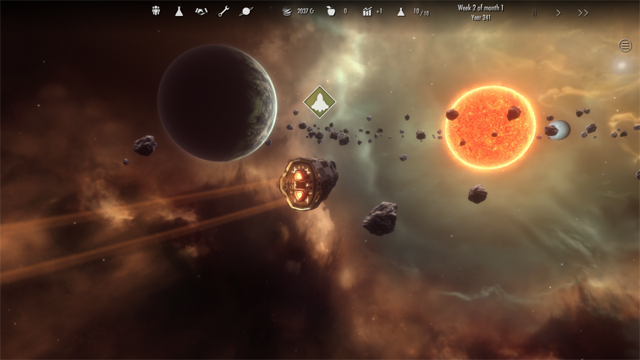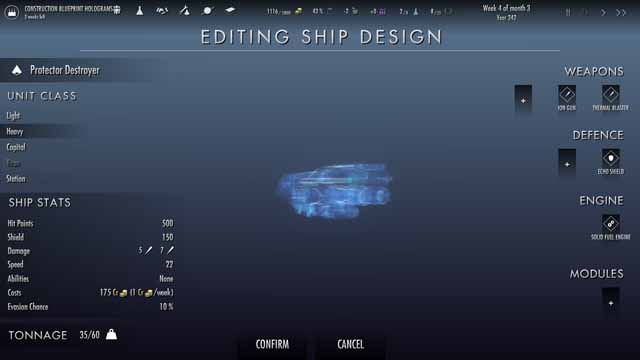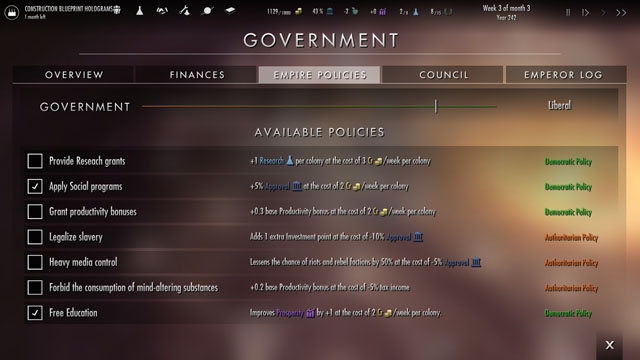I love space. Growing up, I used to watch NASA launches, build model rockets, and I earned my high school volunteer hours working with children at our local planetarium. So I’m a sucker for a good space-themed game — especially strategy games. With hundreds of hours spent playing games like Galactic Civilizations II, Endless Space, Sins of a Solar Empire, and Stellaris, you might just say I’m crazy about space games.
When I was asked to review Dawn of Andromeda — a 4X, real-time strategy game getting ready to leave Early Access on Steam — I was more than excited to see how it would stack up against the competition. I mean, after the “Very Positive” reception of Stellaris by the Steam gaming community, it was really only a matter of time before we would see a contender to the throne. So, let’s dive in and see what this game brings to the table.

The Basics in Dawn of Andromeda
Much like other games of the genre, DoA gives the player a number of preconfigured races to choose from — each with their own strengths and weaknesses. You can also build your own custom races if you want to, which is generally what I end up doing.
So we pick/make our race, set a number of other parameters like galaxy size, resource rarity, space pirate spawn, and etc and woosh! We get whisked away to the beautiful galactic view screen. Up until this point, I’ve only played on the small galaxy setting — which has somewhere around 50 systems in it — but it still has a vast “space” feeling to it.
The start you picked for your civilization determines what you’ll begin your game with. In my case, I went with the “Homeworld” start — which gives me a center of government and a starting scout ship to begin mapping out the neighboring systems.

I generally set the scout to auto-explore and basically forget about it, like every other space game. Now, something I have noticed about ship movement in the game is that all of the ships tend to follow an invisible path — which has caused some traffic jams when you start building up larger fleets to show those rude pirates that you don’t need their protection because you’re a war-mongering bad ass who eats nails and broken glass for breakfast.
Unfortunately, you’re a bit limited in terms of defensive structures, as you can only build a few defensive stations around your planets. The game is still Early Access, though, so there is room yet for some additions like minefields or maybe even planetary weapons platforms to make invaders think twice.
The Gripes
As you progress through the research tree — something I’ll talk about a bit more later on — you’ll unlock a number of modules and weapons upgrades for your fleet, but it all comes down to basic rock/paper/scissors in terms of damage. There really isn’t really anything unique about the upgrades that you research; they’re essentially lighter weight/higher damage versions of the previous iteration that are slightly more expensive.

Another gripe that I have involves ship-related combat. So, you roll up on these pleb pirates who have been talking crap about you, trying to extort your space monies with their pathetic insults. You roll up tough — 10 ships deep (#SquadGoals) — and then both sides just sit there, shooting at each other… completely still.
No trying to dodge/strafe/flank, just sitting there static firing and taking hits like were back in the Napoleonic times with fixed bayonets and muzzleloaders. I feel like this would have been a good time to follow suit with Stellaris and have the ships moving, trying to flank and dodge volleys like civilizations evolved enough to be space-faring should be doing.
Aside from that, let’s revisit the tech tree I mentioned above. Currently, the tech tree is a bit on the lackluster side, especially in the areas of war tech. As I stated, weapons and defenses function on something like a rock/paper/scissors system where certain weapons are good/bad against a particular defensive measure.

The Good
In terms of research and economy, there are a few cool bits of tech that go along with the interesting way that the government is run in the game. As you research some of the areas of the tech tree, you’ll unlock Empire Policies. These policies can be used to manipulate different aspects of your society and, depending on what you picked, it shapes your empire’s government type. Your government type can help or hurt you based on the council advisers that you picked in the beginning of the game, which adds another layer of depth to the decision-making process.
One of the coolest aspects of the game is that not every civilization is at the point of being space-faring. During your exploration of the galaxy, you’ll stumble upon a number of less advanced races that you can influence and possibly build alliances with — increasing the strength of your empire by bringing them into the fold. You’ll also have to contend with the AI trying to do the same, which can become interesting if you’re both trying to convince the same civilization to join your side.
Graphically, the game is beautiful. The ships look great and the weapons effects are about on par with other games of the genre. I’m running the game on high graphics with solid framerates on my GTX 760, which is over the recommended GTX 660 specs on their steam page. The music is also great, riding that line between relaxing/engaging without feeling overpowering.
TL;DR
Dawn of Andromeda is a great addition to the 4X space strategy genre. It boasts great graphics and enjoyable music as well as gameplay mechanics on par with other games of its kind. There are a number of alien races, victory conditions, and levels of depth to keep you busy for some time.
If this sounds like a game you’d like to play then pick it up on their Steam page currently retailing at $24.99.
Note: A copy of this game was provided by the developer for the purposes of this review.






Published: May 3, 2017 01:14 pm